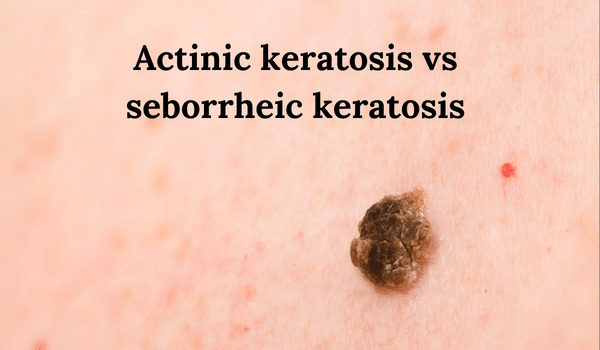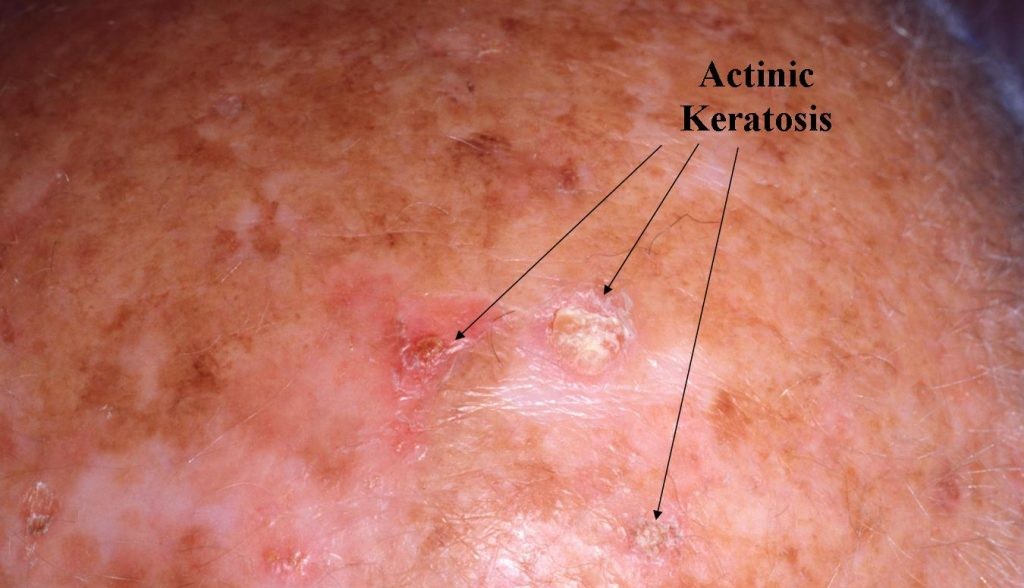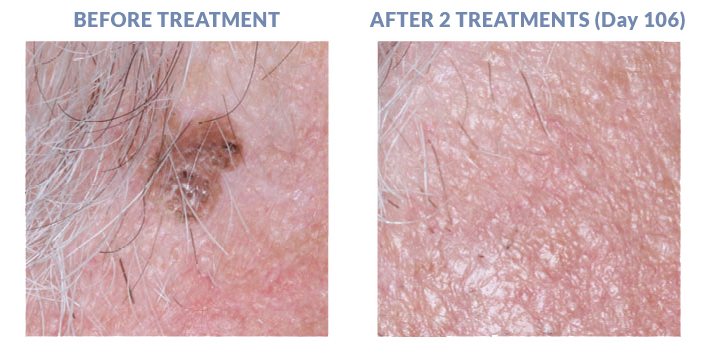
Australia’s high UV exposure makes sun-damaged skin a common concern. Two frequently confused skin growths—actinic keratosis (AK) and seborrheic keratosis (SK)—may look similar on the surface, but they are very different in cause, risk, and treatment.
Understanding these differences helps you take the right steps for your skin health.
What Is Actinic Keratosis?

Actinic keratosis, sometimes called solar keratosis, is a precancerous skin lesion caused by long-term sun exposure.
It often appears on the face, ears, scalp, hands, or forearms—areas most exposed to UV radiation.
Typical features:
- Rough, scaly, or crusty surface
- Pink, red, or skin-coloured patch
- May feel sandpaper-like or tender
- Can merge into thicker plaques over time
Left untreated, actinic keratoses can progress to squamous cell carcinoma (SCC), a common type of skin cancer.
What Is Seborrheic Keratosis?

In contrast, seborrheic keratosis is a benign (non-cancerous) growth that arises from skin cell overgrowth, not sun damage.
Typical features:
- Waxy, “stuck-on” appearance
- Brown, black, or tan colour
- May have a warty or crumbly surface
- Common on the trunk, shoulders, and face
- Usually multiple and appear with age
Seborrheic keratoses are harmless, though they can occasionally itch, catch on clothing, or be removed for cosmetic reasons.
Dermoscopy: How Skin Check Australia Tells Them Apart
At Skin Check Australia, our qualified practitioners use dermoscopy—a non-invasive imaging tool that magnifies and illuminates skin structures invisible to the naked eye.
Under dermoscopy:
- Actinic keratoses show erythematous background, white-to-yellow scale, and perifollicular accentuation (“strawberry pattern”).
- Seborrheic keratoses show milia-like cysts, comedo-like openings, and ridges or fissures, giving them a distinctive pattern.
This precision ensures accurate diagnosis and guides appropriate treatment.
Photodynamic (PD) Therapy at Skin Check Australia

Photodynamic therapy (PDT) is a highly effective, non-surgical option for treating actinic keratoses and other superficial sun-damaged lesions.
How It Works
- A photosensitising cream (such as methyl aminolevulinate or aminolevulinic acid) is applied to the affected area.
- After an incubation period, the area is exposed to a specific wavelength of light, activating the cream.
- The activated compound selectively destroys abnormal, precancerous cells while sparing healthy tissue.
Benefits of PD Therapy
- Non-invasive and cosmetically elegant
- Treats visible and subclinical sun damage
- Minimal downtime
- Ideal for field cancerisation (areas with multiple AKs)
- Excellent cosmetic results with little or no scarring
What to Expect at Skin Check Australia
Our experienced clinicians perform PDT in a comfortable, controlled environment.
- Treatment duration: around 90 minutes
- Aftercare: temporary redness, mild swelling, or peeling—similar to a sunburn—resolves in a few days
- Results: smoother, clearer skin and reduced recurrence risk of precancerous lesions
We also provide ongoing skin surveillance, ensuring early detection of any new or changing spots.
When to Seek a Skin Check
You should book an appointment if you notice:
- Rough, scaly, or persistent patches on sun-exposed skin
- Spots that crust, bleed, or don’t heal
- Rapidly changing or itchy growths
Early assessment can make all the difference in preventing skin cancer.
Protecting Your Skin
Prevention remains key. Combine regular skin checks with:
- Broad-spectrum SPF 50+ sunscreen
- Sun-protective clothing and hats
- Avoiding midday sun exposure
- Routine self-skin examination
Conclusion
Actinic keratosis and seborrheic keratosis may look similar, but only one carries a risk of cancer.
At Skin Check Australia, our team combines expert dermoscopic diagnosis with advanced photodynamic therapy to keep your skin healthy, clear, and cancer-free.

